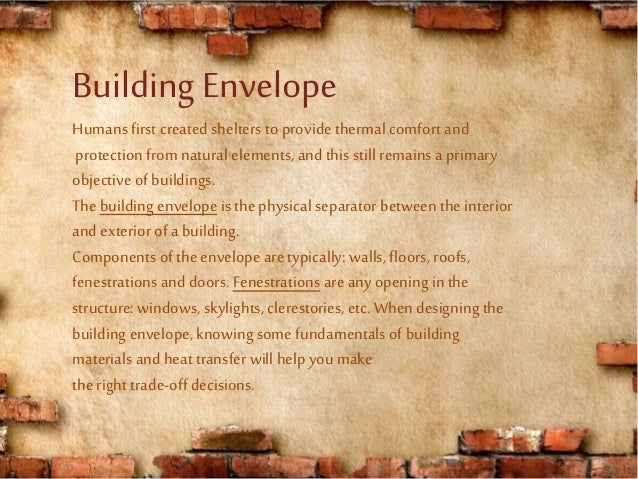

Stone wool insulation solutions (batt, semi-rigid, and rigid board for continuous insulation) are an ideal option for myriad reasons, including the most obvious one-superior performance in improving thermal efficiency. Material selection for the building envelope is key. The addition of insulation in exterior walls and roofs, combined with a water-resistive barrier (also acting as part of the air barrier system), is integral to improving building performance, reducing leaks, and creating more comfortable indoor environments. More importantly, they often do not have any water-resistive and air barriers, making them very leaky and further increasing energy losses. You May Also Like Specifying polyiso for continuous insulation in wallsĮxisting older buildings will typically have little to no insulation within the envelope, resulting in excess heat loss and increased energy consumption.
#The building envelope does not include drivers#
In this way, improvements to indoor health and comfort can also be vital drivers for building renewal investment. Mechanical systems are often outdated and inefficient, requiring constant maintenance. In many cases, existing buildings are poorly insulated, or not insulated at all, and leaky, resulting in excess heat loss and reduced thermal comfort. In addition to energy and emissions conservations, building retrofits improve occupant health and comfort. For example, the Climate Emergency Action Plan in Vancouver has the aim to reduce carbon emissions by half by 2030 (based on 2007 values), which will require focus on buildings, specifically retrofitting existing buildings.
#The building envelope does not include code#
Local code adoption and policy development have also strengthened governmental positions on energy reduction targets, adopting building retrofit requirements. Throughout North America, model energy codes are evolving for higher energy efficiency. Where codes and policy changes are not enough, project teams and research and development investments require government support to enhance building technologies and materials. Also, policy development around energy retrofits and the adoption of high-performance net-zero buildings needs to be accelerated.

For these changes to happen, energy codes must add measures to strengthen energy reduction while not raising resultant emissions. Presently, renovation rates are one to two per cent of the building stock per year, with an average energy use intensity (EUI) reduction of less than 15 per cent-to make a significant impact, EUI reductions should be between 30 and 50 per cent. have announced initiatives that will simultaneously help meet environmental protection targets as well as drive post-pandemic economic recovery. Recently, federal leaders in both Canada and the U.S. Energy renovation could provide up to 55 per cent of the greenhouse gas (GHG) emissions reductions needed to meet 2030 targets, aligning cities with a 1.5 C (34.7 F) trajectory. Deep energy renovations of commercial and multi-unit residential buildings are critical if cities want to tackle their climate emissions on a large scale.


 0 kommentar(er)
0 kommentar(er)
